sound card scope 1.32
As an electronic hobbyist, I always wanted to own a sound generator good enough as signal source for my audio test needs. Since most audio test instruments available are expensive and some are bulky to occupy my work bench, my options have been narrowed down when I came across on the internet a program called “sound card scope 1.32” by C. Zeitnitz. This program is free for private or public educational use but please read the license agreement from the author regarding this matter.
This program includes oscilloscope, spectrum analyzer, sound generator and numerous knobs and buttons as well as sliding controls that mimics like a real test gear of your dream. As the name implies, this program can measure frequencies up to the limit of your sound card, from few Hz up to 15 kHz. Also take note that the signal that you will measure is being feed into the ”mic input” of the sound card having a maximum of 1 mv or up to 500 mv only depending on the type of the card being bundled on your PC. This sensitivity can be adjusted via windows volume control panel. If you use the other sound input such as its RCA jack then its typical sensitivity is 1 V to 2. 5 V (sound card dependent also). Likewise, typical input impedance is around 75 to 600 ohms (sound card dependent also). This very low input impedance can give heavy load to some small signal sources in fact when I measure the sawtooth at pin 6 of the 555 timer for checking, the oscillation simply stop, don’t laugh!. So you will need a series resistor to increase the input resistance and a voltage divider to measure voltages above those mentioned level. Please be careful!
A picture is worth more than a thousand words.
This graphical user interface reminds me of a classical yet expensive test gear I’ve seen during the time when I was working in a semiconductor company. Yumm nostalgia. When I test fire this thingy and measure the output of my 555 timer oscillator in a breadboard, these are the result of my test:
A 427 Hertz generated by 555 timer in the breadboard
This sawtooth waveform is generated by 555 timer circuit via a breadboard. This is done by connecting a 100k resistor in series with 0.1uf capacitor at output pin3.
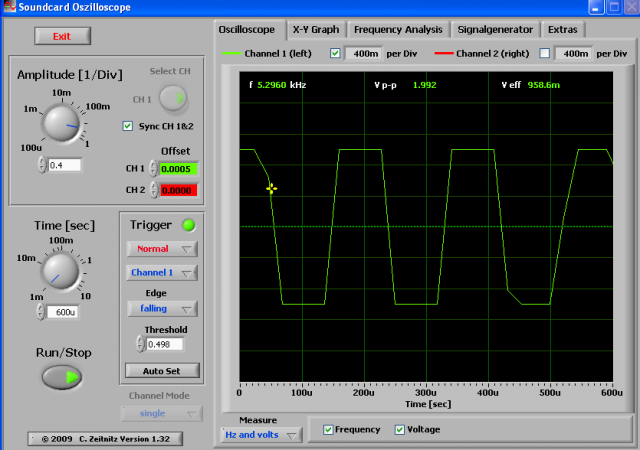 When I crank-up the frequency to 5 kHz my sound card start to show a pathetic waveform
When I crank-up the frequency to 5 kHz my sound card start to show a pathetic waveform
You may notice that the waveform rise and fall times slowness occur at higher frequency but this is due to my sound card response time and not by the program itself. If you want better sound card experience then you may consider upgrading your sound card from creative labs sound blaster X-Fi series. These potent sound cards extend sampling rate above 80 kHz at 24 bit resolution. Though I have not test this either.
Here are some shots taken from the function generator dropdown list options as sawtooth, squarewave, and triangular waves.
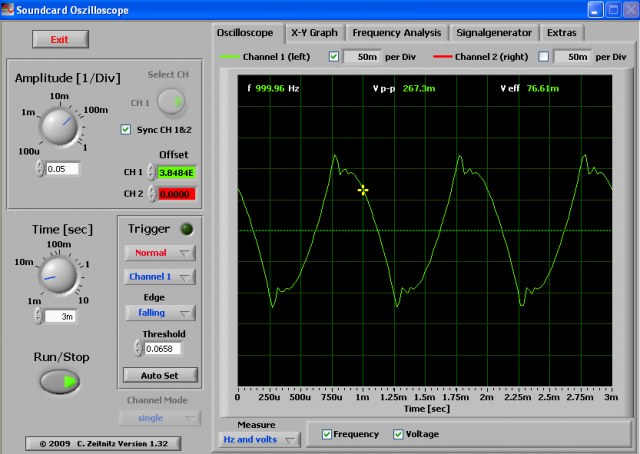 When I put a check on the triangle function, I was surprise how poor my sound card perform even at very low frequency. 1kHz is shown above
When I put a check on the triangle function, I was surprise how poor my sound card perform even at very low frequency. 1kHz is shown above
My sound card looks so pathetic that it cannot produce decent waveform quality even below 1 kHz for signals as listed above.
Its only good in showing sinewave below and above 5 kHz but the square wave also behave as sinewave as well. Oh well.
Again, Please be careful in measuring audio signals with higher voltages. The last image shown above is taken when investigating the frequency spectrum of the 555 timer circuit being tested. The fundamental frequency contains several noises above and below the main frequency. You can use this to check the frequency response of your opamp when wired as active band pass filter or observing the response curve of your active cross-over network. Measuring the frequency of any oscillator within the limits of your sound card is also a good bet because of the added frequency counter too. Well, at least this is how my sound card performs. How about yours? Have you ever use your sound card with these useful programs yet?

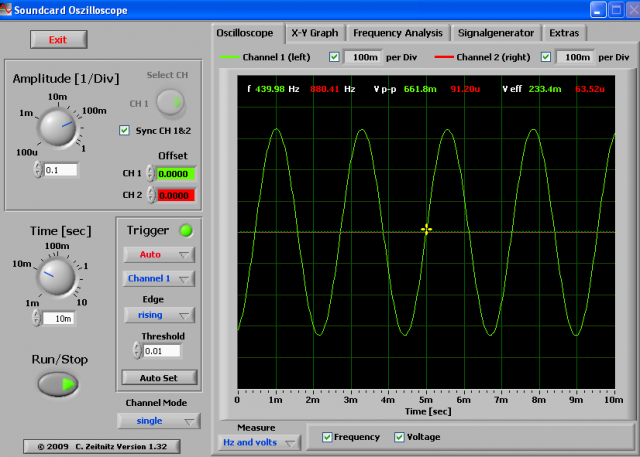
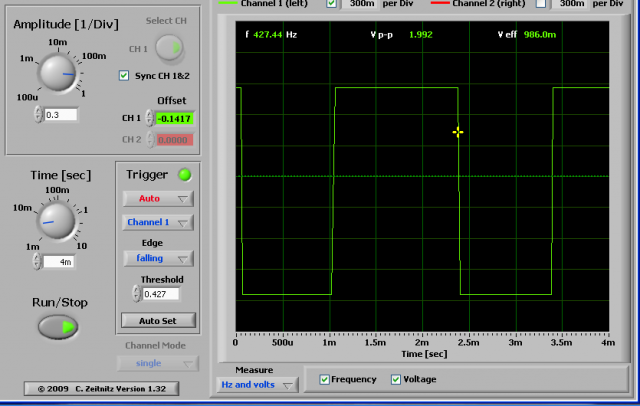


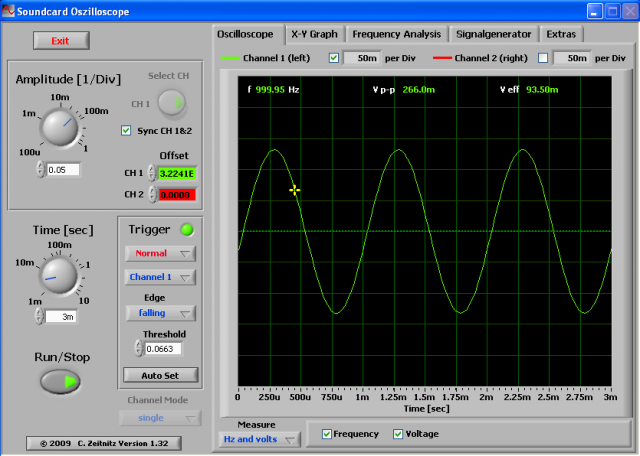
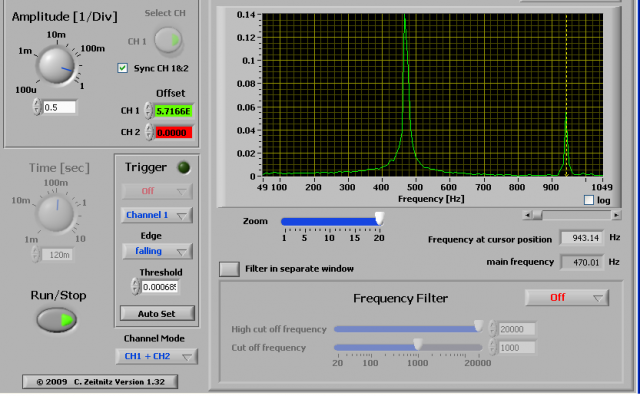
Thank you
im happpy the program working on olders sondcards